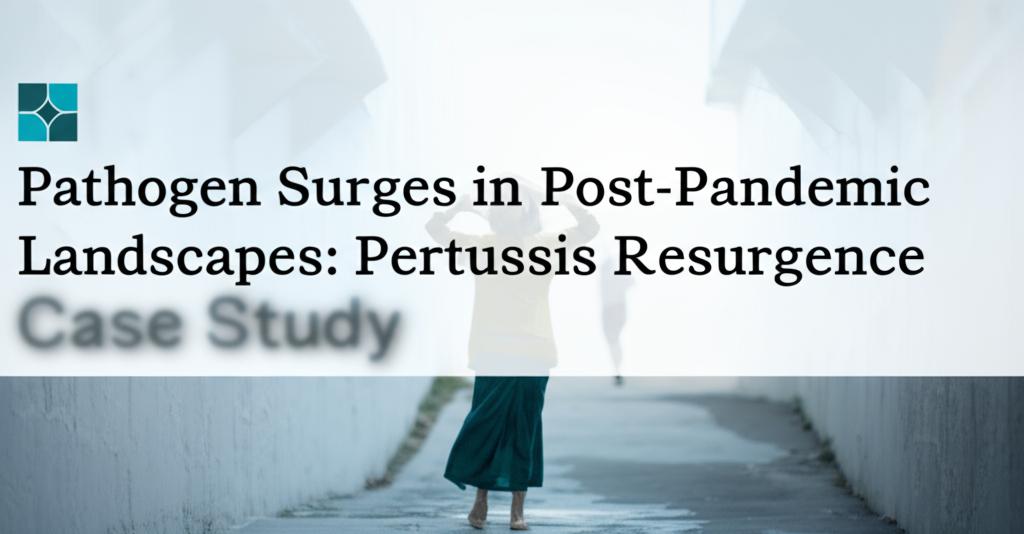The COVID-19 pandemic has significantly altered the landscape of infectious diseases, and pertussis, commonly known as whooping cough, is a striking case study of this phenomenon. After a period of unusually low case numbers during the pandemic, likely due to measures like masking and social distancing, pertussis is seeing a significant resurgence globally.
The Resurgence:Reports from early 2025 indicate a dramatic increase in pertussis cases compared to the same period in 2024, and even surpassing pre-pandemic levels in some regions. For instance, the United States saw reported pertussis cases in 2024 more than six times higher than in 2023, and this trend appears to be continuing into 2025 with over 8,000 cases reported by early May. If this trajectory persists, the U.S. could face its highest number of infections since the pertussis vaccine was introduced in 1948. Similar surges are being observed in other parts of the world, including Europe, Australia, and Asia. The UK, for example, reported 2,793 cases in the first quarter of 2024 alone, a significant jump. Japan is also experiencing its worst outbreak in years, with over 7,000 infections recorded in early 2025.
This resurgence is not entirely unexpected. Pertussis is a cyclical disease, typically peaking every 3 to 5 years. The pandemic disrupted this cycle, leading to a build-up of susceptible individuals due to reduced exposure and, consequently, lower natural boosting of immunity.
Factors Contributing to the Surge:Several factors are believed to be driving this increase in pertussis cases:
- Relaxation of COVID-19 Mitigation Measures: The lifting of mask mandates and social distancing has allowed respiratory pathogens like Bordetella pertussis (the bacterium that causes whooping cough) to circulate more freely. This has been described as an "immunity debt," where the population is more susceptible due to lack of exposure during the pandemic.
- Waning Vaccine Immunity: Protection from pertussis vaccines, particularly the acellular vaccine (aP) used in many countries, can wane over time. This means that even vaccinated individuals can become susceptible again, especially adolescents and adults who may not have received recent booster doses. Immunity from the acellular vaccine is thought to last about three to five years.
- Declining Vaccination Rates: In some regions, there has been a concerning decline in routine childhood vaccination coverage, including for pertussis. This dip, exacerbated by disruptions to healthcare services during the pandemic and rising vaccine hesitancy, has left more individuals, especially young children, vulnerable. For example, in the U.S., the percentage of kindergartners up-to-date with recommended pertussis vaccines fell from 95% in the 2019-20 school year to 92% in the 2023-24 school year.
- Pathogen Evolution: The Bordetella pertussis bacterium is constantly evolving. Some research suggests that current strains may be adapting in ways that could affect vaccine effectiveness, though studies are ongoing to fully understand these changes. For example, the ptxP3 allele of the pertussis toxin gene promoter has become globally predominant. In France, a macrolide-resistant bacterial isolate was identified for the first time since 2011, a strain more commonly seen in Asia.
- Improved Diagnostics and Surveillance: Increased awareness among healthcare providers and better diagnostic tools, including multiplex PCR panels, may also contribute to a higher number of reported cases, as more infections are being identified.
Pertussis can be a serious illness, especially for infants under one year old who are too young to have completed their primary vaccination series or whose immune systems are still developing. Complications in this age group can include pneumonia, seizures, encephalopathy (brain disease), and even death. Tragically, infant deaths due to pertussis have been reported in the recent surges in the US and UK. In the first quarter of 2024, the UK reported five infant deaths.
Pregnant women are also a key group, as they can pass protection to their newborns by getting vaccinated during pregnancy (ideally between 20 and 32 weeks).
Symptoms:Pertussis often starts with mild, cold-like symptoms such as a runny nose, low-grade fever, and a mild cough. However, after about a week or two, the cough can become severe, characterized by fits of rapid coughs followed by a high-pitched "whoop" sound as the person gasps for air. These coughing fits can last for weeks or even months and are often worse at night.
Global Response and Recommendations:Public health authorities globally are emphasizing the critical importance of vaccination as the best defense against pertussis. Key strategies include:
- Ensuring Timely Childhood Vaccinations: Adhering to the recommended childhood immunization schedule is crucial.
- Booster Doses: Adolescents and adults should receive booster vaccinations as recommended to maintain protection.
- Vaccination During Pregnancy: Pregnant women are strongly encouraged to get vaccinated to protect their newborns.
- Strengthened Surveillance: Enhanced monitoring of pertussis cases and outbreaks is necessary to understand the evolving epidemiology of the disease.
- Public Awareness: Educating the public about the risks of pertussis and the benefits of vaccination is vital.
- Early Diagnosis and Treatment: Prompt medical attention for suspected pertussis cases allows for timely antibiotic treatment, which can reduce the severity of the illness and limit its spread.
The resurgence of pertussis serves as a potent reminder of the ongoing threat posed by vaccine-preventable diseases and the need for sustained public health efforts to maintain high vaccination coverage and respond effectively to emerging challenges in the post-pandemic world.

